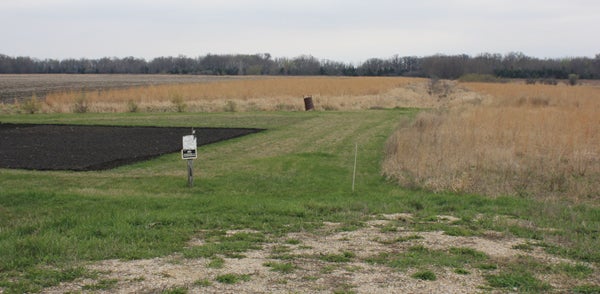Officials plan for major CRP loss
Published 6:01 pm Saturday, March 31, 2012

Brian Landherr of Rose Creek has several chunks of land — roughly 20 acres total — in different CRP programs. This CRP shelterbelt of his lies just west of Rose Creek. Like many other chunks of CRP in Minnesota, this plot may no longer qualify to be enrolled in the program when it comes due. - Matt Peterson/matt.peterson@austindailyherald.com
When Brian Landherr sees inches of standing water on his land, he has certain thoughts — some of them tied to the waning state of the Conservation Reserve Program.
Like many outdoorsmen, conservationists and Department of Natural Resources officials, Landherr is concerned about the roughly 300,000 acres of CRP in Minnesota that will expire this year, and the 823,000 acres set to expire in the next five years — an area larger than Hennepin, Ramsey and Anoka counties combined. Minnesota has about 1.5 million total acres of CRP.
Landherr, from Rose Creek, doesn’t have huge plots of CRP — temporarily retired agriculture land set aside for grassland — as much of Mower County doesn’t qualify. However, he does have several CRP buffer strips, which are more common in Mower County and run adjacent to ditches and stream banks to keep unwanted runoff from entering waterways. Landherr knows massive amounts of CRP are in jeopardy, and he lives right next to a river.
“Everybody wants to get the water off their land and in the creek as soon as possible,” Landherr said. “Well, I’m at the creek.”
Many acres of CRP have been disappearing nationwide because the federal program cannot compete with grain prices, and the DNR has been discussing ways to alleviate that issue.
“We are at a crossroads with grasslands in Minnesota,” DNR Commissioner Tom Landwehr said in a press release. “The loss of CRP will have devastating impacts on prairie wildlife. We want to work with state and federal agencies, landowners and the conservation community to find a solution.”
Landwehr met with other conservation officials Thursday, during which federal Natural Resource Conservation Service Chief Dave White offered ideas about using technical assistance to help landowners with CRP and other federal farm conservation and water quality programs in Minnesota.
Among water quality concerns, the loss of habitat for many species is a major concern, as well. That’s another reason why Landherr, an avid hunter, will continue to enroll his buffer strips into CRP. Though his next contracts don’t expire until 2016, about 150 contracts in Mower County totaling 900 acres will expire this September, according to Michelle Janssen, program technician at Mower County Farm Service Agency. And more are expiring in the next few years, as well.
Janssen expects high re-enrollment in Mower County as landowners are currently applying for extensions, and some are hoping to start new contracts, as well. While many Mower CRP contracts may be re-enrolled, Janssen knows officials need to assure that grasslands remain a part of the American landscape.
“I do believe we need to try to maintain a lot of grasslands out there,” she said.
The U.S. Department of Agriculture is in the midst of a four-week Conservation Reserve Program general sign-up, which will end April 6.





